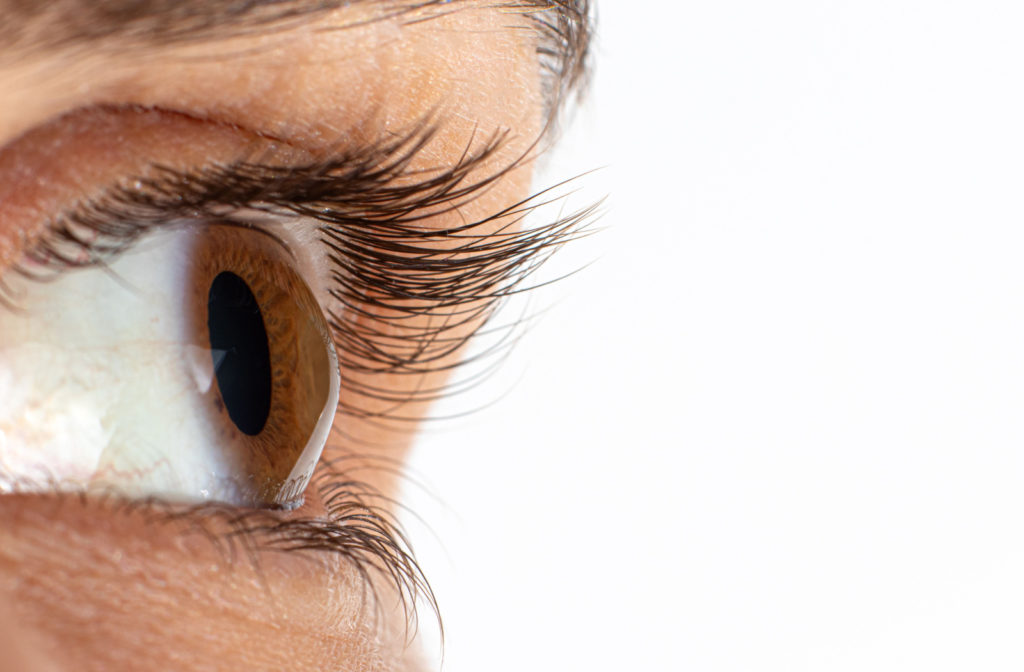Keratoconus is an eye disease affecting the cornea and can dramatically impact your quality of life. However, advancements in eye care technology have led to innovative solutions like scleral lenses, which have been a game-changer for many living with this condition.
Scleral lenses are often recommended for hard-to-fit eyes and are particularly effective in managing keratoconus. They offer an improved fit, enhanced comfort, and vision correction.
What Is Keratoconus?
Keratoconus causes the cornea—the clear, dome-shaped front surface of the eye—to thin and gradually bulge outwards into a cone shape. This change in shape can result in blurred vision and increased sensitivity to light and glare.
Symptoms of Keratoconus
Those with keratoconus often experience a range of symptoms that impact their vision. One common symptom is seeing glares and halos around lights, which can be particularly noticeable in the dark.
Eye discomfort is another common symptom. It can manifest as eye irritation or headaches that come with eye pain. Another distinguishing symptom is an increased sensitivity to bright light, which can cause discomfort and further impair vision.
Some may notice a sudden decline or clouding in their vision, which can be alarming and is usually a sign that the condition has progressed.
Causes of Keratoconus
While the exact cause of keratoconus is not fully understood, it appears to be associated with a combination of genetic and environmental factors.
Certain conditions and behaviors have been linked to the development of keratoconus, including:
- Eye allergies that lead to excessive eye rubbing
- Connective tissue disorders like Marfan syndrome and Ehlers-Danlos syndrome
What Are Scleral Lenses?
Scleral lenses are specialty, large-diameter, gas-permeable contact lenses designed to vault over the entire cornea and rest on the white part of the eye, known as the sclera.
Their unique design makes them a standout choice for those with corneal irregularities like keratoconus. They are also a good option for those with dry eyes.
How Scleral Lenses Work
The unique design of scleral lenses allows them to reshape irregular corneas into a smooth optical surface, effectively rectifying vision issues.
The scleral lenses create a space between the cornea and the backside of the lens itself, providing a reservoir for fluid that provides continuous hydration to the cornea.
Types of Scleral Contact Lenses
While all scleral lenses share the same basic design, there are variations in size and where they sit on the eye:
- Full scleral
- Corneoscleral
- Semi-scleral lenses
Your eye doctor can help you pick the right style for your condition.
Full Scleral Lenses
These are the largest type of scleral lenses and offer the most coverage. They rest on the sclera and vault over the entire cornea, making them ideal for severe cases of keratoconus.
Corneo-Scleral & Semi-Scleral Lenses
Corneoscleral and semi-scleral lenses are smaller and rest near the junction between the cornea and the sclera, making them suitable for milder cases of keratoconus.
Benefits of Scleral Lenses for Keratoconus
Scleral lenses offer several benefits for individuals with keratoconus.
Improved Visual Acuity
One of the primary advantages of scleral lenses is their ability to improve visual acuity. Scleral lenses can enhance vision quality by creating a smooth, regular surface over the irregular cornea, providing crisp, clear sight.
Comfort & Stability
Scleral lenses offer exceptional comfort and stability. They don’t move around on the eye like traditional contact lenses can, reducing the risk of lens dislodgement and providing consistent vision correction throughout the day.

Caring for Scleral Contact Lenses
The health of your eyes is paramount, and the upkeep of your lenses plays a crucial role in protecting them. Here are some essential guidelines to follow:
- Always clean your hands before inserting or taking out your contact lenses.
- Always remove your lenses before you sleep. The risk of infection can increase by eight-fold if you wear them while sleeping.
- Avoid exposing your lenses to water, as they may carry harmful germs. Refrain from wearing them during swimming or while taking a shower.
- Use a disinfecting solution specifically designed for contact lenses to clean them.
- Clean your contact lens case with the same solution and replace it every quarter.
If you notice any redness or discomfort in your eyes, take out your contact lenses at once and see your eye doctor.
Your Journey to Clearer Vision with Foothill Optometry Group
At Foothill Optometry Group, we understand visual health is not a one-size-fits-all situation. That’s why we strive to provide personalized, high-quality options for your prescription needs, including scleral lenses for complex vision needs like keratoconus.
Let us guide you on your path to a clearer vision. Book your appointment today!



